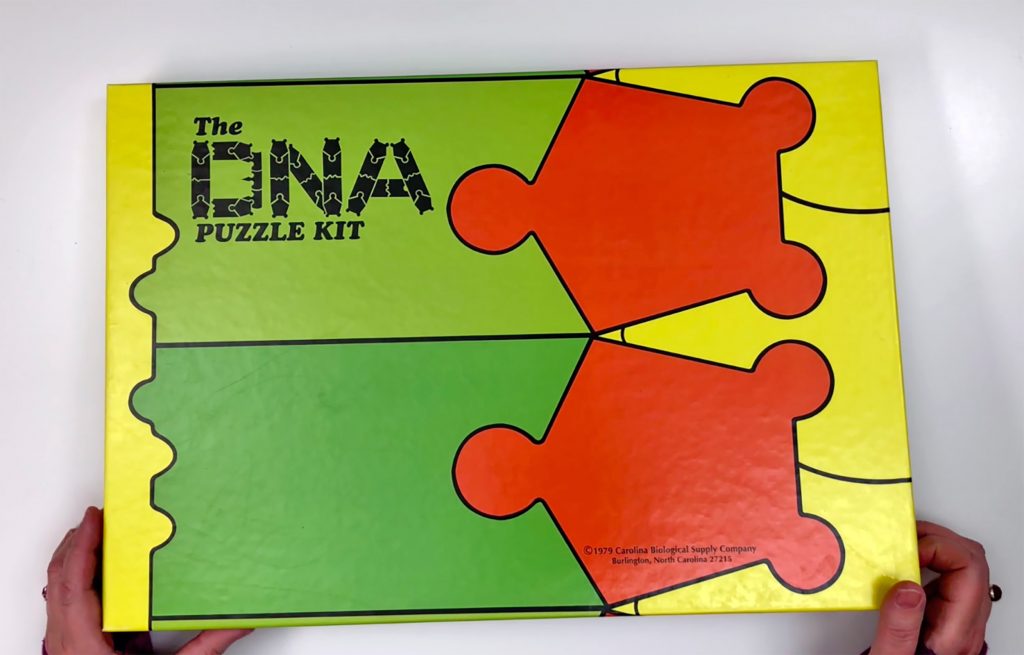
Protein Synthesis Transcribing & Translating the Genetic Code

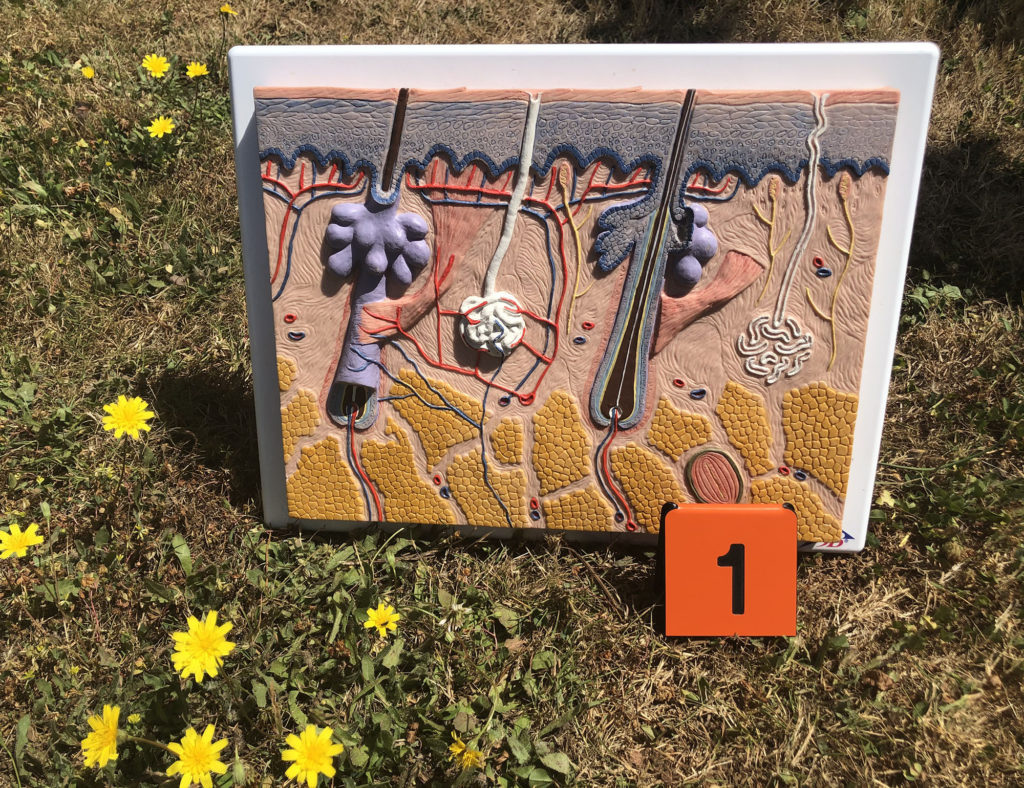
Protein Synthesis Objectives
-
Explain what a gene is and how it relates to DNA structure.
-
Describe what occurs in the process of transcription, and translation.
-
Provide examples of the functions proteins play in animals, including how structure relates to these functions.
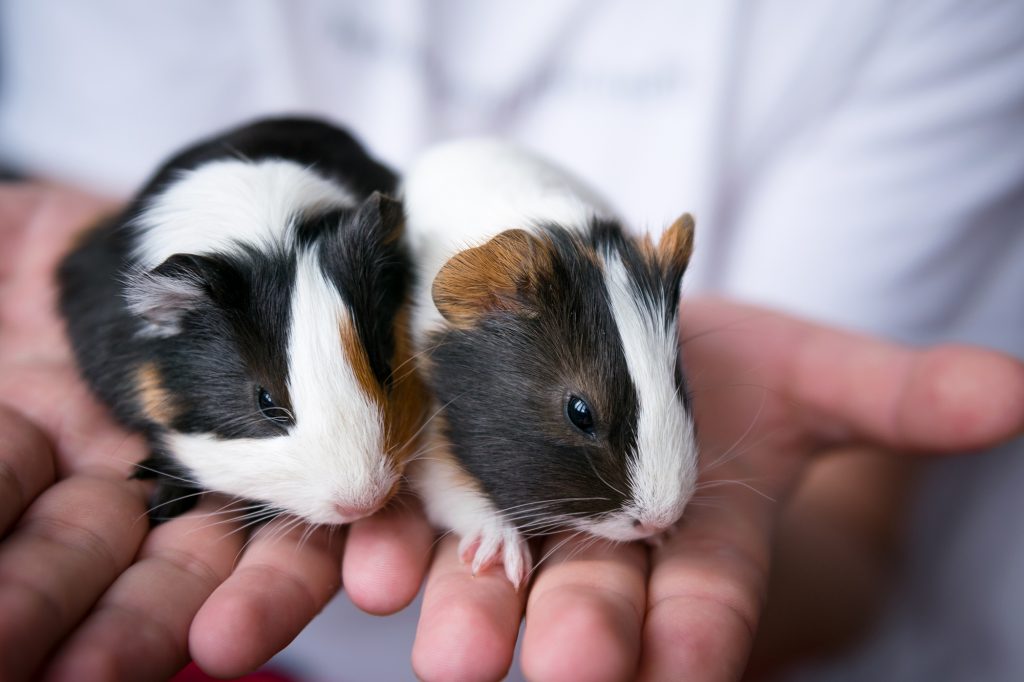
Humans and guinea pigs (Cavia porcellus) have something in common: neither species can produce Vitamin C, although most other vertebrates can.
This story relates to genes and the proteins they produce, topics covered in the first two sections of this guide.
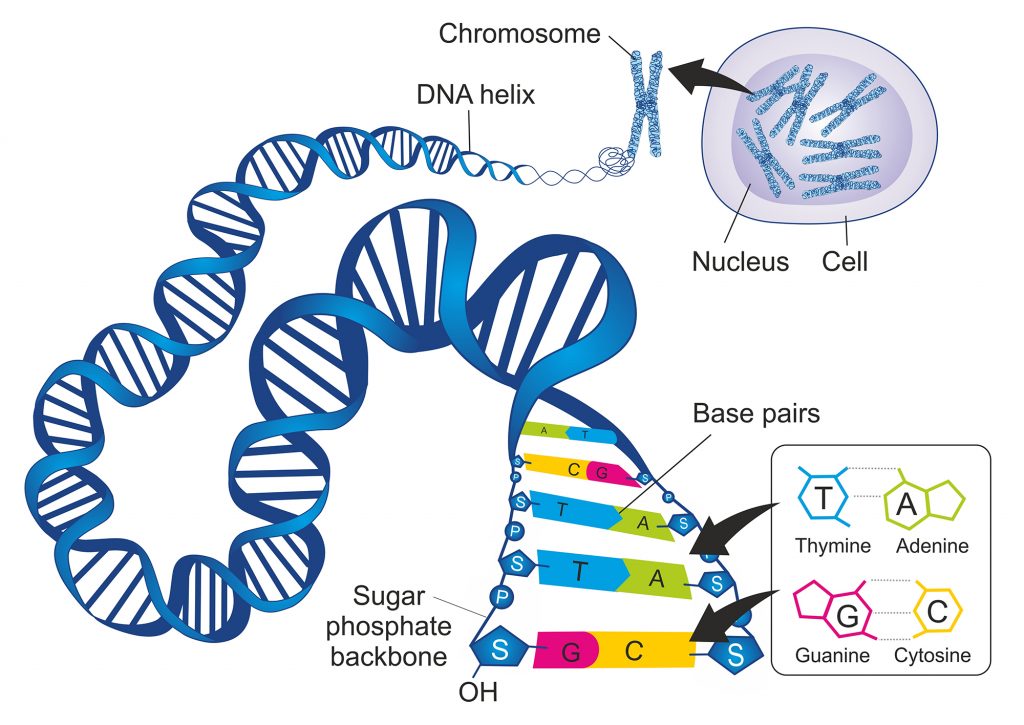
From the previous guide, chromosomes are coiled ___ wrapped around histone proteins.
Genes are sequences of DNA that code for proteins.
This section explores how DNA relates to cells making proteins; also called the process of protein synthesis.
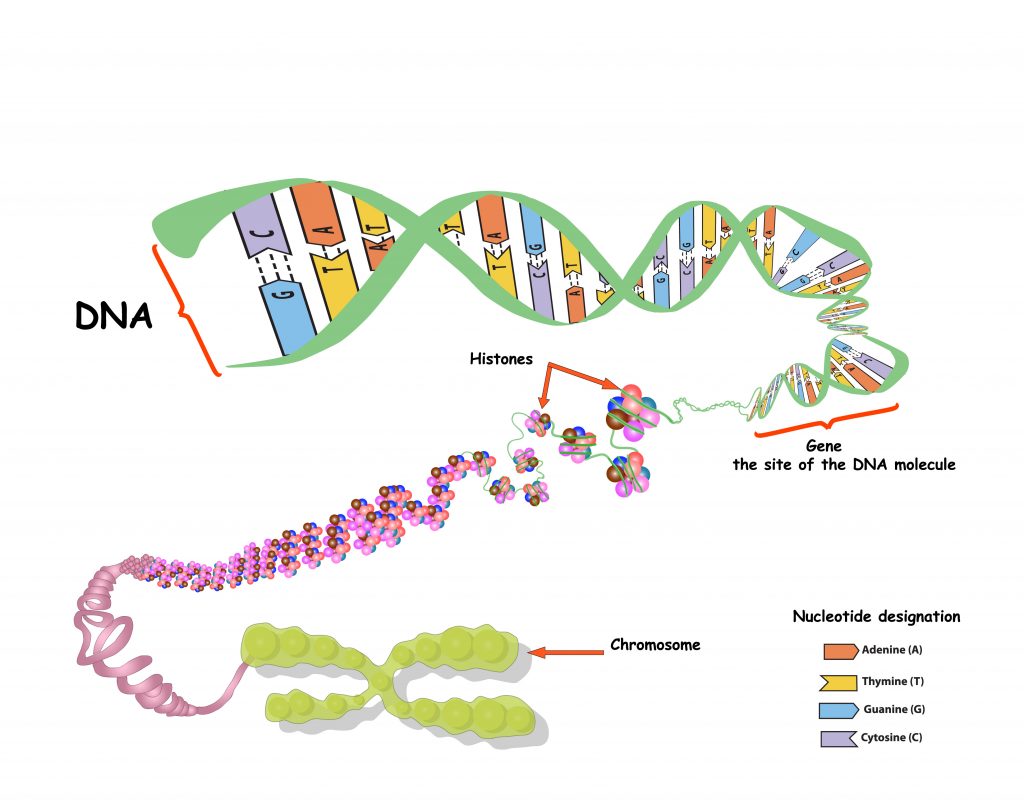
This video introduces the relationship of genes to protein synthesis.
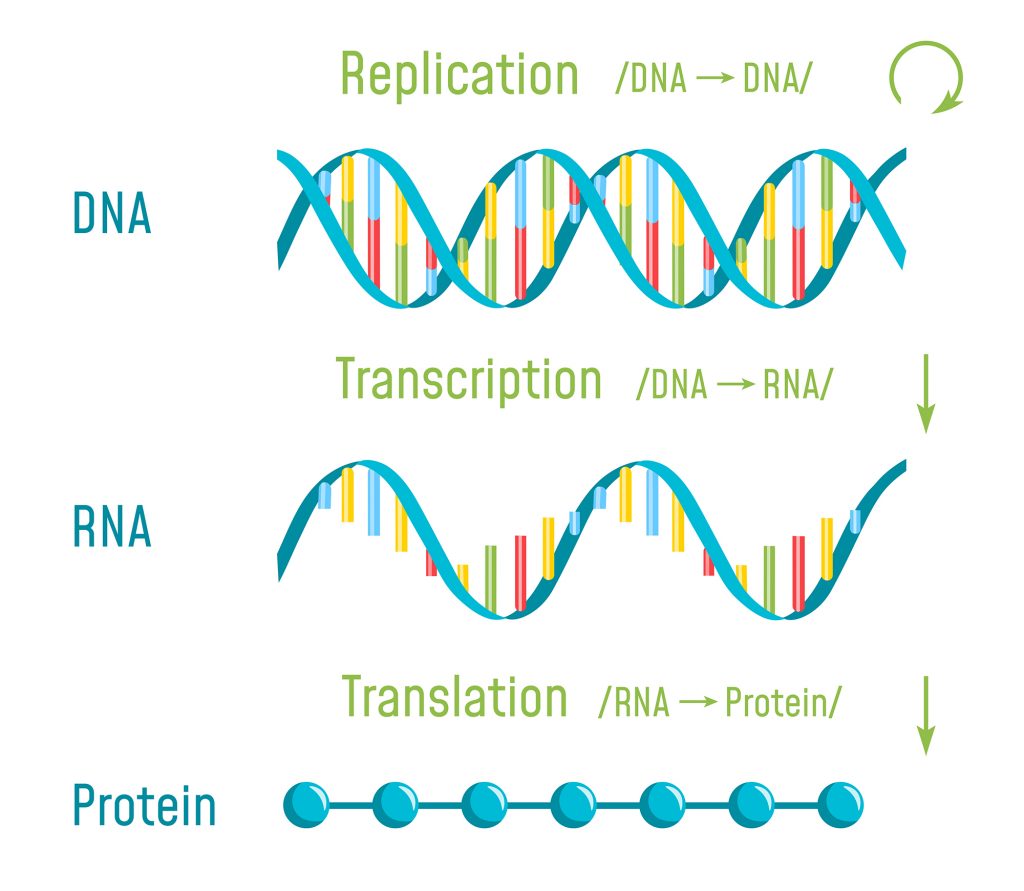
The basic processes that involve DNA are:
Replication: Making a new, identical chromosome for mitosis or meiosis.
Transcription: Making an RNA copy of a portion of DNA.
Translation: RNA directing the correct order of amino acids in a polypeptide.
This is a demonstration of protein synthesis that will introduce you to the steps in making a polypeptide chain of amino acids. Key terminology is listed under the video.
KEY TERMINOLOGY
Nucleotide: a phosphate, sugar, and a base
Codon: three nucleotides together, codes for a single amino acid
Genetic Code: the same codon sequence codes for the same amino acid, no matter which species
mRNA: messenger RNA is a copy of the gene region of DNA
rRNA: ribosomal RNA make up the ribosome structure
tRNA: transfer RNA brings the correct amino acid to the mRNA codon
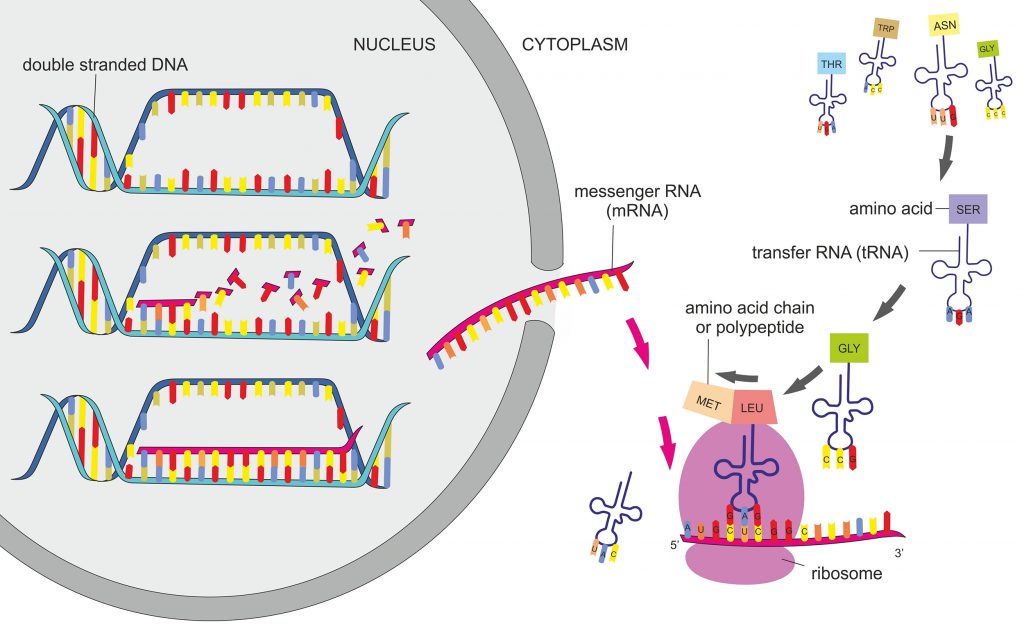
Science illustrators depict protein synthesis in a variety of ways, but they all include transcription and translation in some manner.
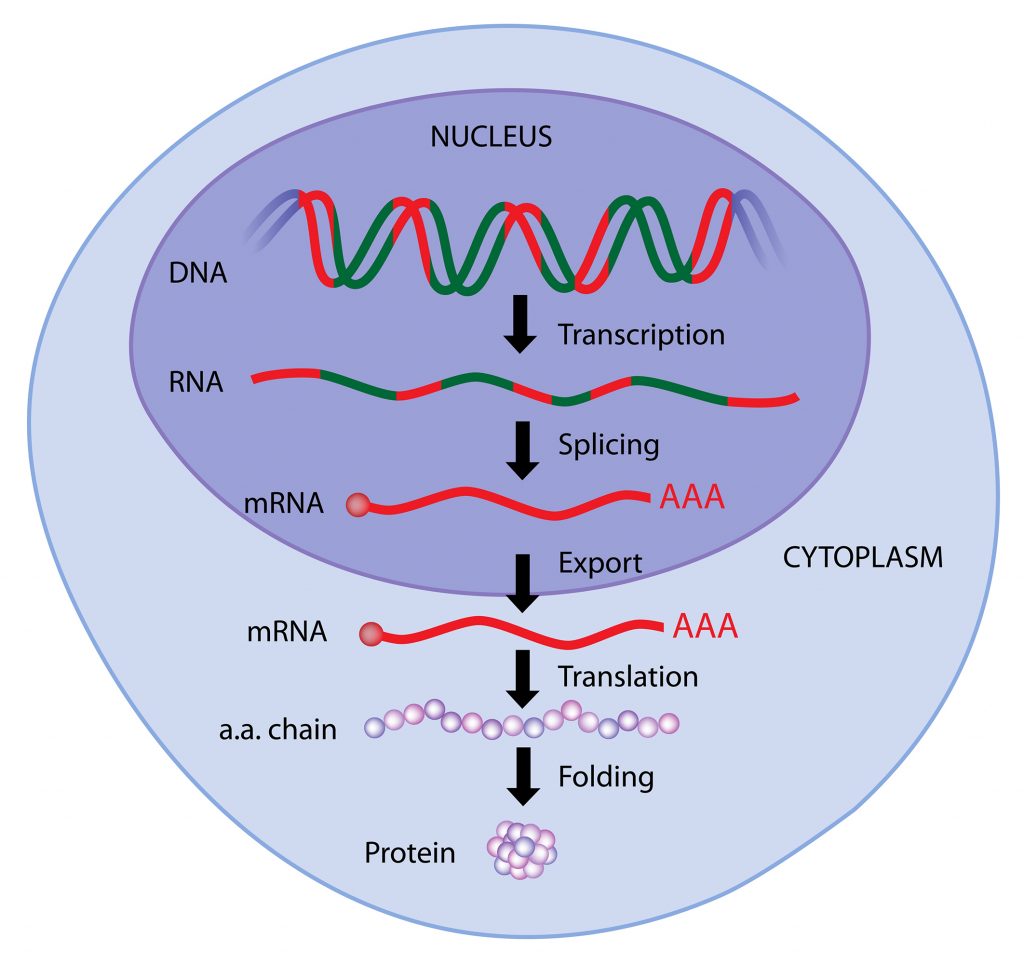
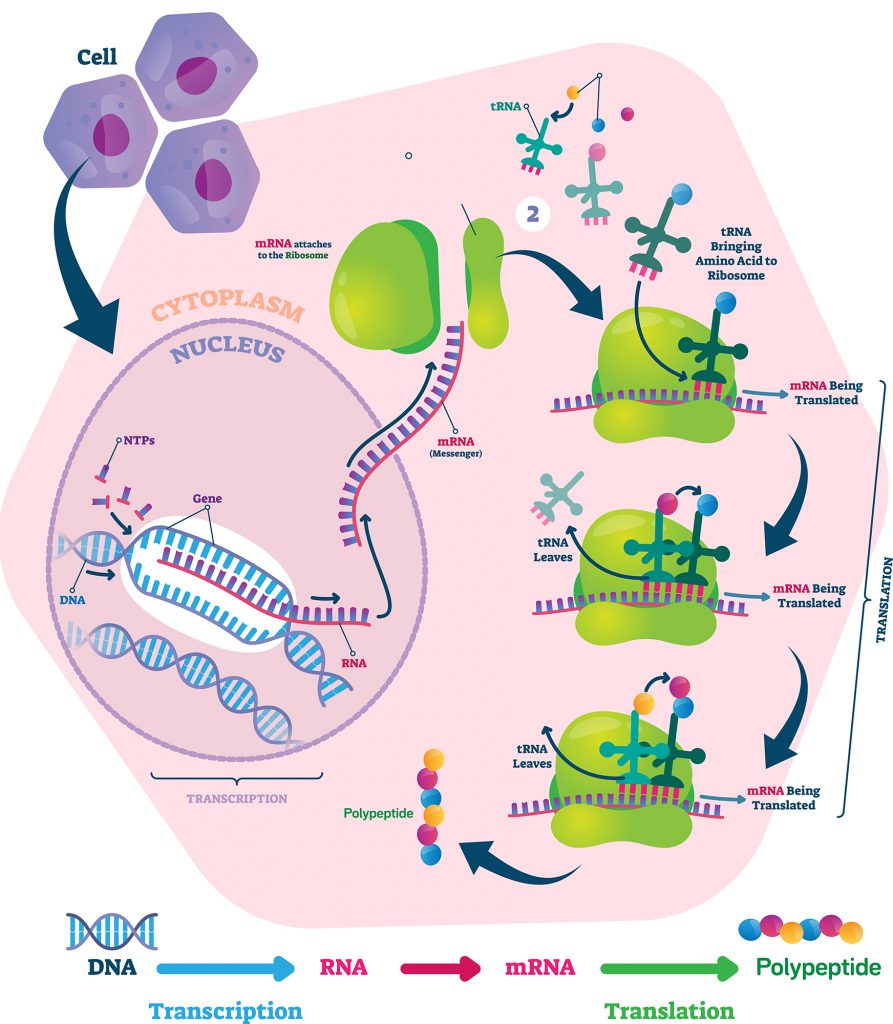
Start this Guide’s first journal assignment here
Journal Page #7: Protein Synthesis Drawing
For this journal page you are making an original labeled drawing of protein synthesis. Sketch/draw the synthesis of a hypothetical protein fragment within a cell. Include the following labeled elements:
-
cell
-
nucleus
-
cytoplasm
-
amino acids
-
the DNA sequence of CGT-CCA-CGT-CCA
-
the corresponding mRNA sequence
-
the specific amino acid sequence produced (mini polypeptide)
-
ribosome (rRNA)
-
tRNA
-
nucleotides in a codon
-
transcription
-
translation
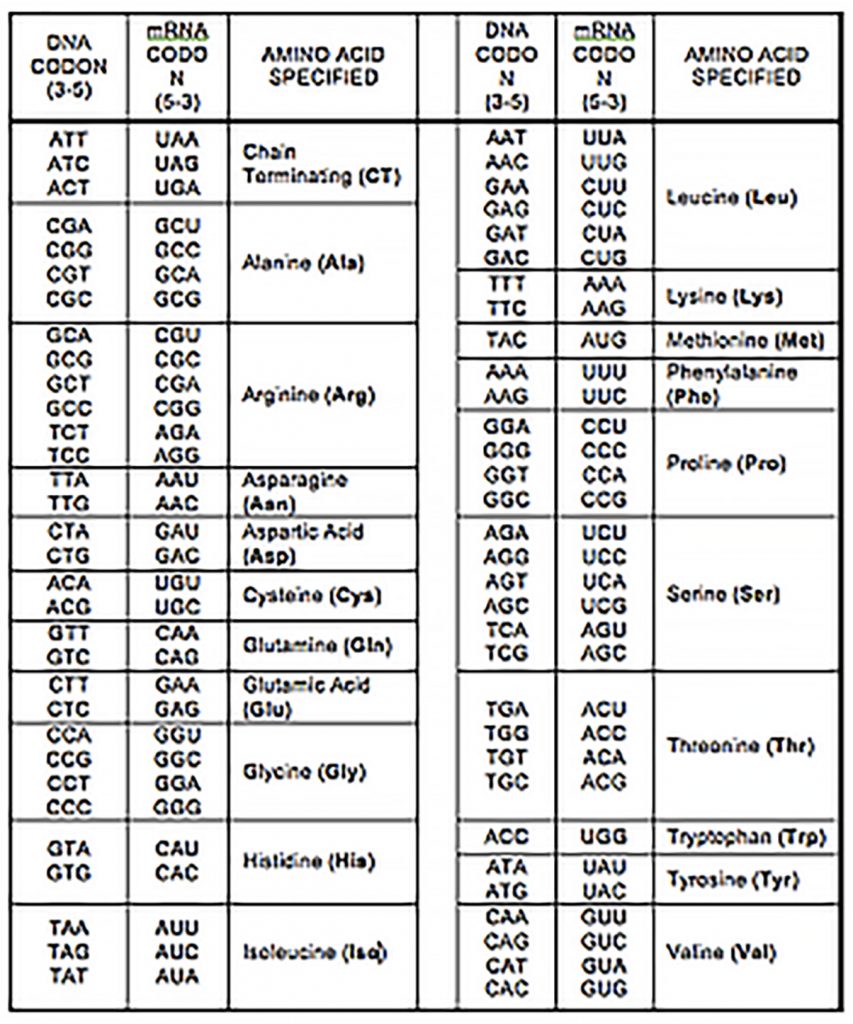
More on Protein Synthesis
If you would like to see another representation of protein synthesis, there is a video of a puzzle model on this guide’s resource page.
If the point of DNA is to code for the construction of protein, clearly proteins are important to organisms.
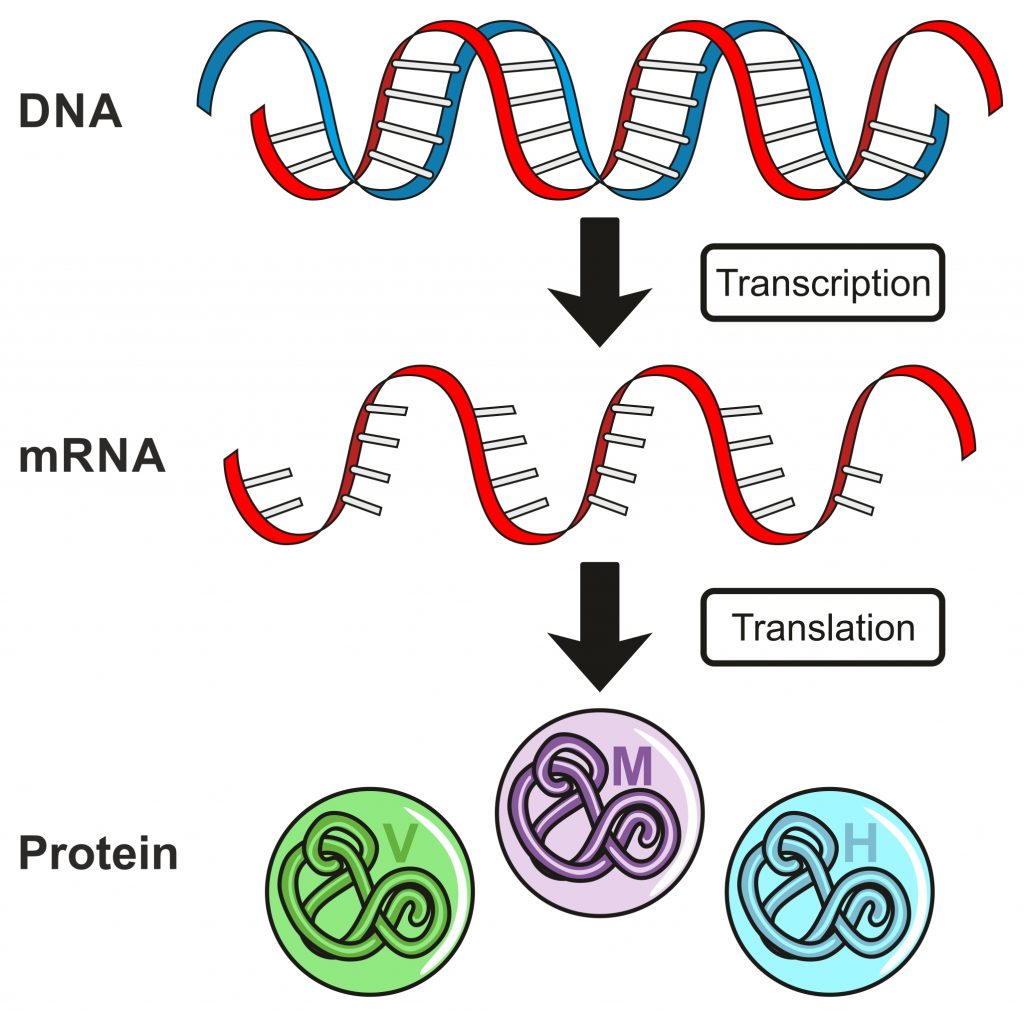
If you point to any structure or function in an organism, a protein is somehow involved directly or indirectly.
For example, animal skin contains a variety of proteins, including collagen and keratin. Both of these proteins have a distinct structure and function that we will examine in the body coverings section of this guide.
This video describes how the structures of proteins relate to their varied functions.
Polypeptides are folded into three-dimensional structures. In some cases the folding is minimal, in other cases the folding is elaborate.
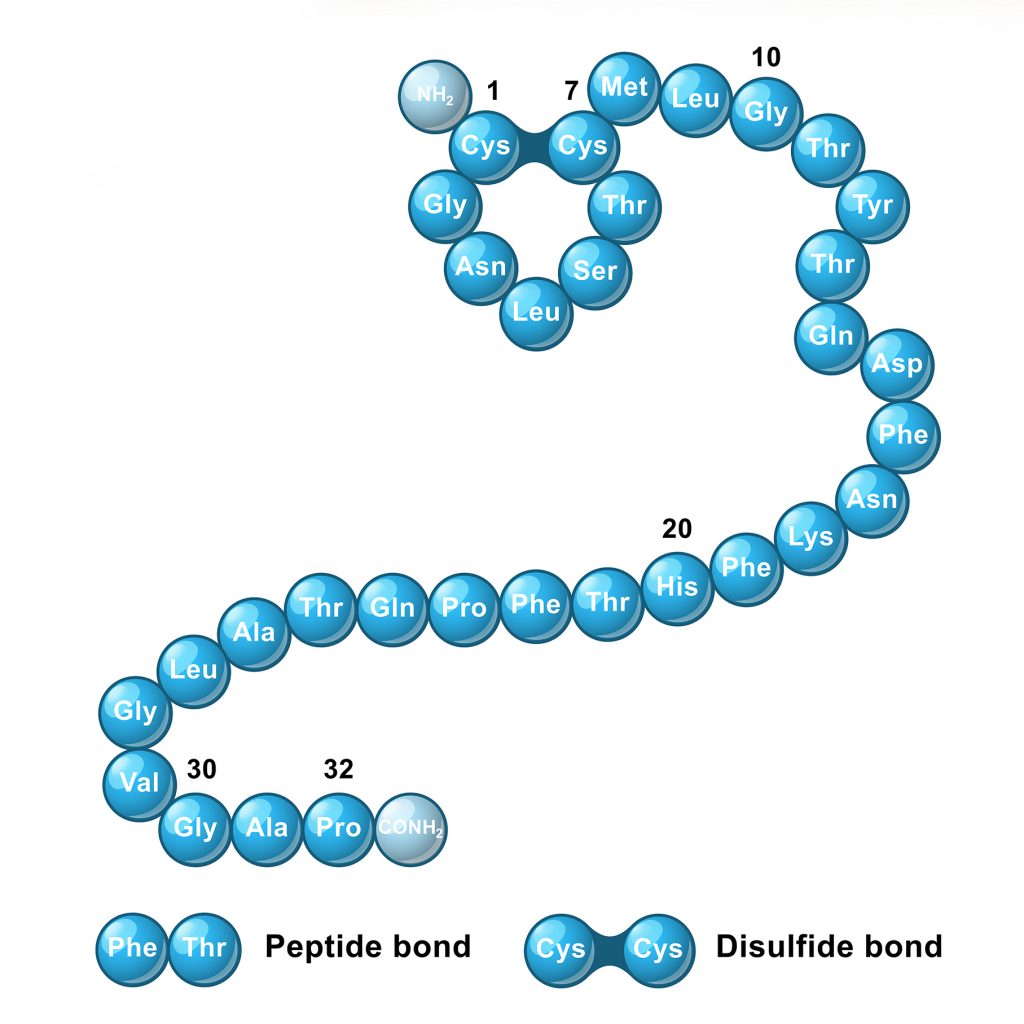
Calcitonin
Calcitonin is a barely-folded polypeptide chain that plays an important role in regulating calcium in fish, reptiles, birds, and mammals.
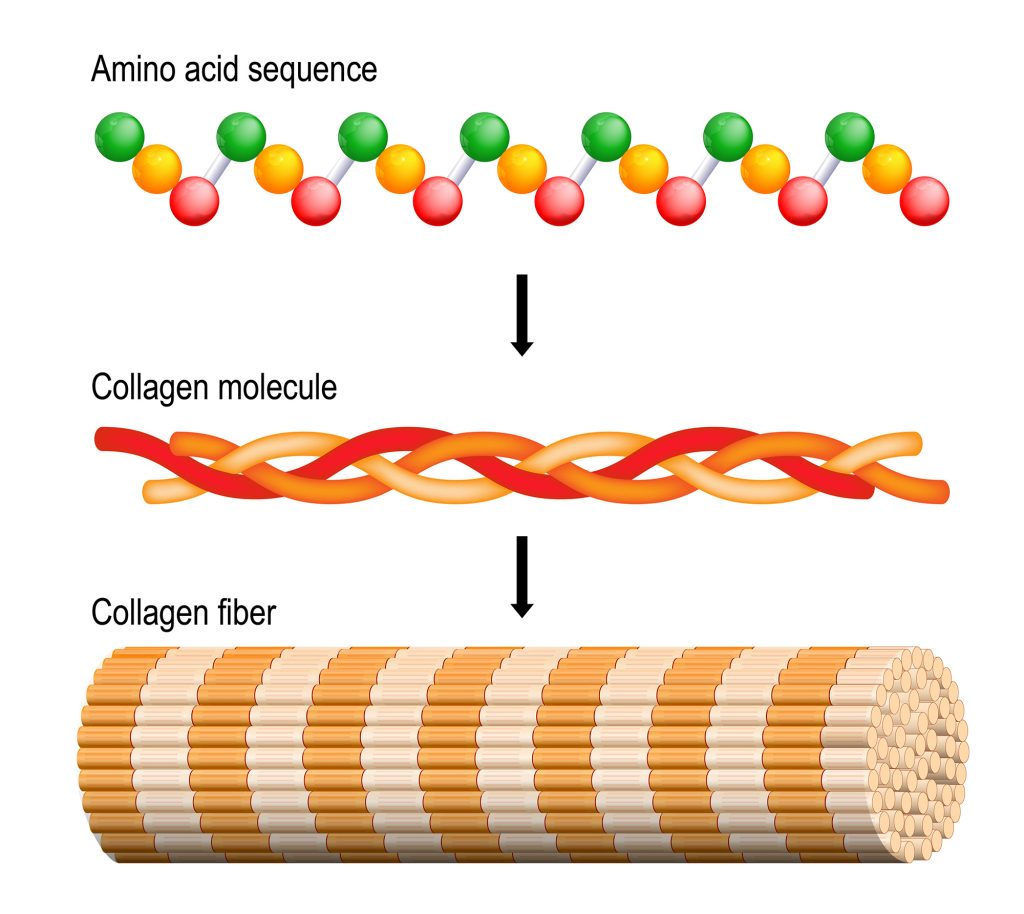
Collagen
Collagen is coiled and bundled to produce tissue strength and flexibility in vertebrates, especially mammals.
There are many misconceptions related to proteins in the human diet.
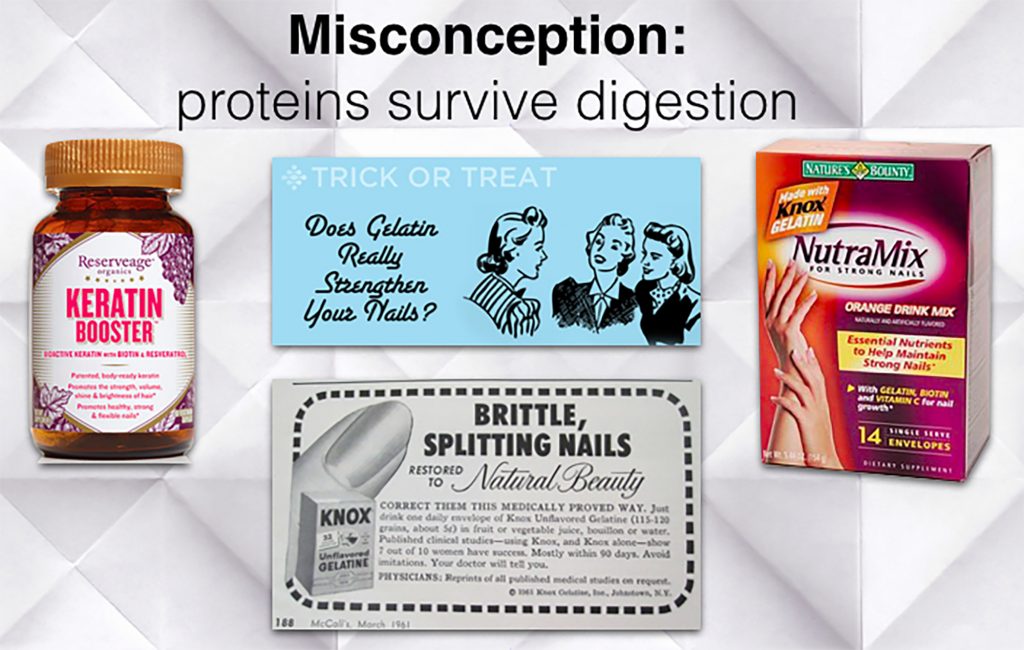
Proteins do not survive digestion
Digestive acids and enzymes break down proteins into amino acids that are absorbed and travel through the blood to cells. Eating keratin for instance, does not mean it stays intact and travels to the skin to become keratin in our own body.
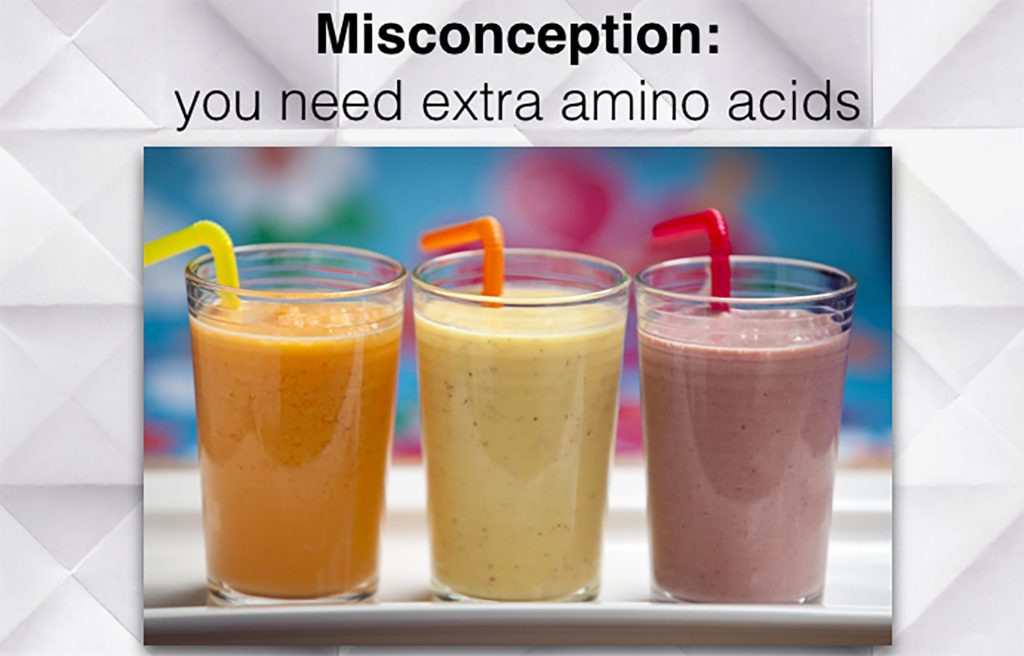
A balanced diet is key
Unless a person faces malnutrition due to limited food or problems with absorption, protein supplements are generally not necessary. Research supports a balanced diet with nutrients coming from varied digestible and absorbable food sources.
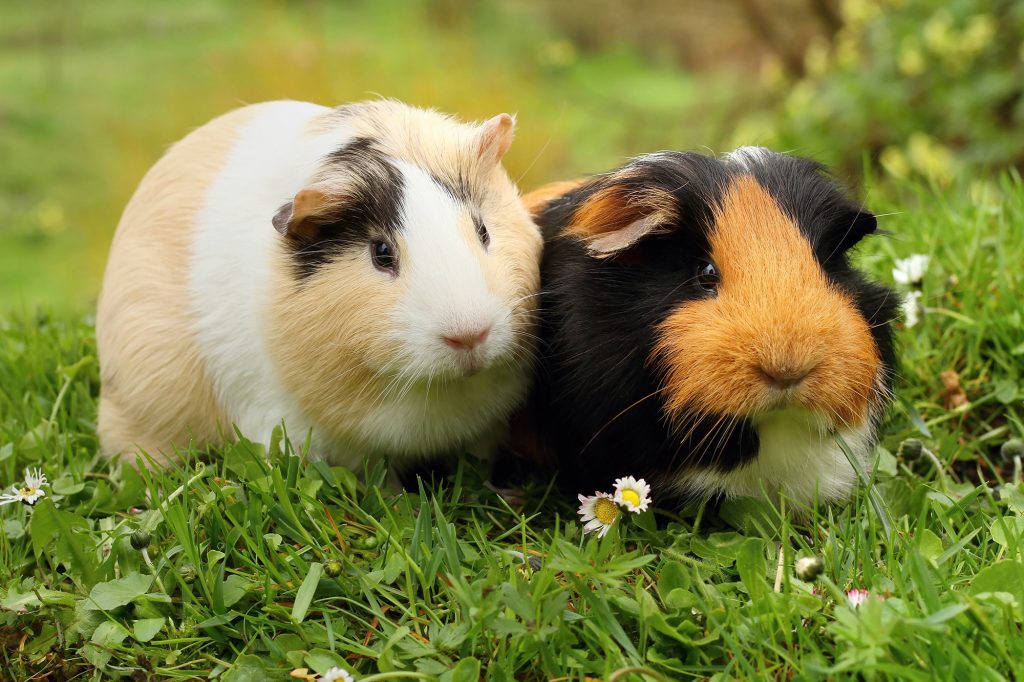
Now that we have the fundamentals of genes and proteins, it is time to explain why humans and guinea pigs do not make vitamin C.
Both species have a gene that is involved in vitamin C production in other vertebrate species, but it is mutated to the point it does not work in humans or guinea pigs.
Humans and guinea pigs need to consume vitamin C-rich foods on a regular basis. Vitamin C deficiency can result in improper formation of collagen, necessary for tissues throughout the body. In humans, scurvy can result.
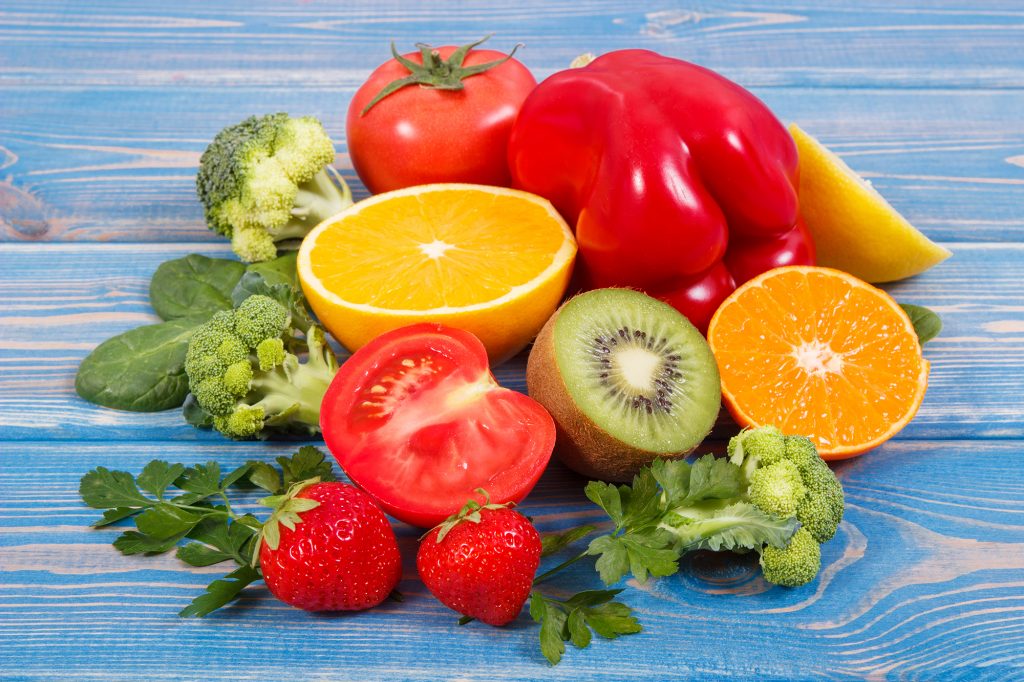
Vitamin C synthesis depends on a gene that produces the GULO enzyme, a protein needed to finish synthesis of this vitamin. Excessive mutations have changed this into a pseudogene, a gene that no longer functions.
Some researchers suggest that genetic technologies could be used to “fix” this, and other pseudogenes in human chromosomes and make them work to produce proteins so cells could do more things, like make Vitamin C. A cautionary note is that Vitamin C is a powerful anti-oxidant. Anti-oxidants have many useful functions, like binding to potentially dangerous free radical cellular wastes, but excessive anti-oxidants could themselves be a problem.
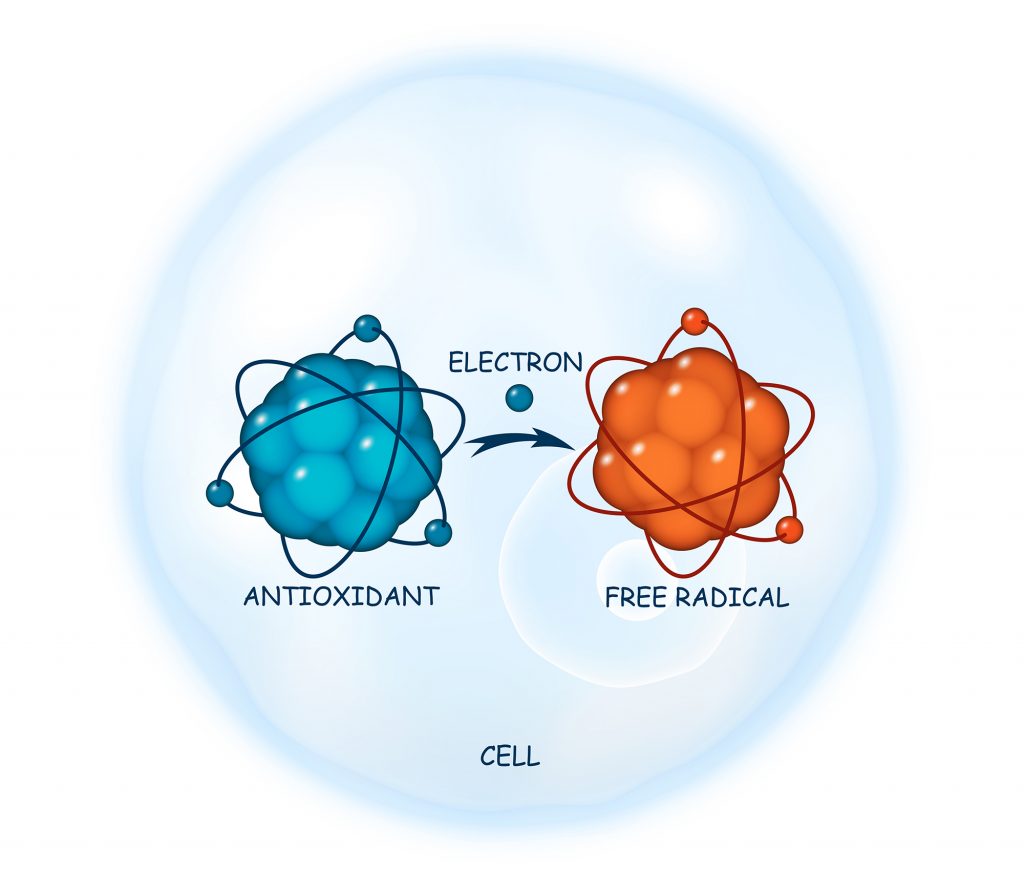
Different species have different genomes. The next section introduces genomes, and how they lead to differences between species.
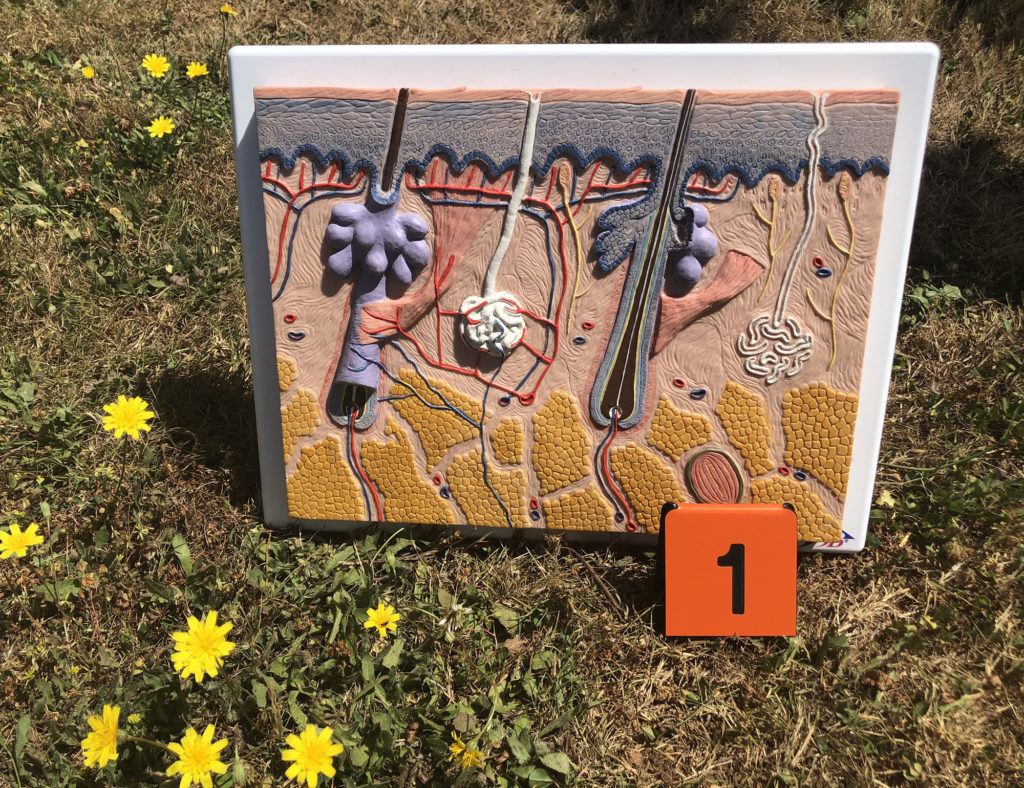
Check your knowledge. Can you:
-
explain what a gene is and how it relates to DNA structure?
-
describe what occurs in the process of transcription, and translation?
-
provide examples of the functions proteins play in animals, including how structure relates to these functions?
